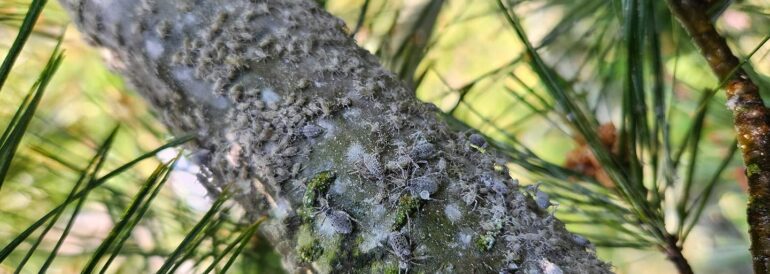Understanding Bronze Birch Borer – The Hidden Tree Killer
Metallic, olive-bronze, Bronze birch borer (BBB), Agrilus anxius, is a native North American beetle that causes fatal destruction to birch trees without much noise.
After the infestation occurs, a majority of infected birches die between two and four years without treatment. One can achieve a 70 to 85 percent success rate using proactive treatment when canopy decline is less than 40 percent.
- The financial consequences, without treatment, are high: replanting mature birch trees can cost between 1500 and 2500, and municipalities record loss of trees in the high-impact regions of almost 38 percent. Increases in rates occur during drought years and better results occur when stressed trees are contacted early. The promptness of the treatment has a direct effect on efficacy. Climate-related droughts pre-condition the outbreaks, and that is why special attention should be paid to pre-emptive management.

Figure 1: Progression of bronze birch borer damage, beginning with D-shaped exit holes on bark (left), advancing to canopy dieback (second), visible bark sap bleeding (third), and ultimately full tree mortality (right).
Bronze Birch Borer Identification – Recognising the Enemy
1) Adult Beetle Characteristics
The adult bronze birch borer measures approximately 7 to 12 mm in length and displays a dark metallic olive or coppery sheen. Its emergence is tied to accumulated degree-day models, commonly occurring in a brief two- to three-week window when 400–550 degree-days (base 50 °F) are reached.
While adults feed minimally on foliage to complete maturation, their keen preference is for sun-exposed, drought-stressed birches. These traits, appearance, emergence timing, and host choice are key markers in identifying BBB presence.
2) Damage Symptoms and Progression
The first detectable symptoms are yellowing or wilting in the upper canopy, often one or two years post-infestation, followed by branch dieback as larval galleries disrupt the cambium’s nutrient pathways. Larvae create spiralling, sawdust-packed tunnels under the bark, visible only when peeled away.
- Emergence by adults leaves characteristic D-shaped exit holes approximately 3–5 mm (3/16 in) wide. Symptoms usually begin in smaller upper branches (¾–1 in) and progressively advance downward over successive generations.

Figure 2: Life stages of the bronze birch borer adult beetle (left) and destructive larva tunneling beneath bark (right).
For homeowners seeking photographic identification or additional diagnostic support, referencing the OSU Homeowner Guide or the UNH Fact Sheet is valuable. These reputable Extension resources offer detailed visuals and clear management steps.
Species Vulnerability – Choosing Winners and Losers
Species selection provides long-term resilience against BBB. River birch (Betula nigra) demonstrates remarkable resistance, with survival rates as high as 97 percent and virtually no observed colonization.
In contrast, European white birch (B. pendula) and Himalayan birch (B. utilis) face near-complete mortality under BBB pressure. Paper birch (B. papyrifera) fares better, exhibiting about 76 percent survival over two decades.
Genetics rooted in co-evolution make these differences profound, with North American species generally more tolerant than exotic counterparts.
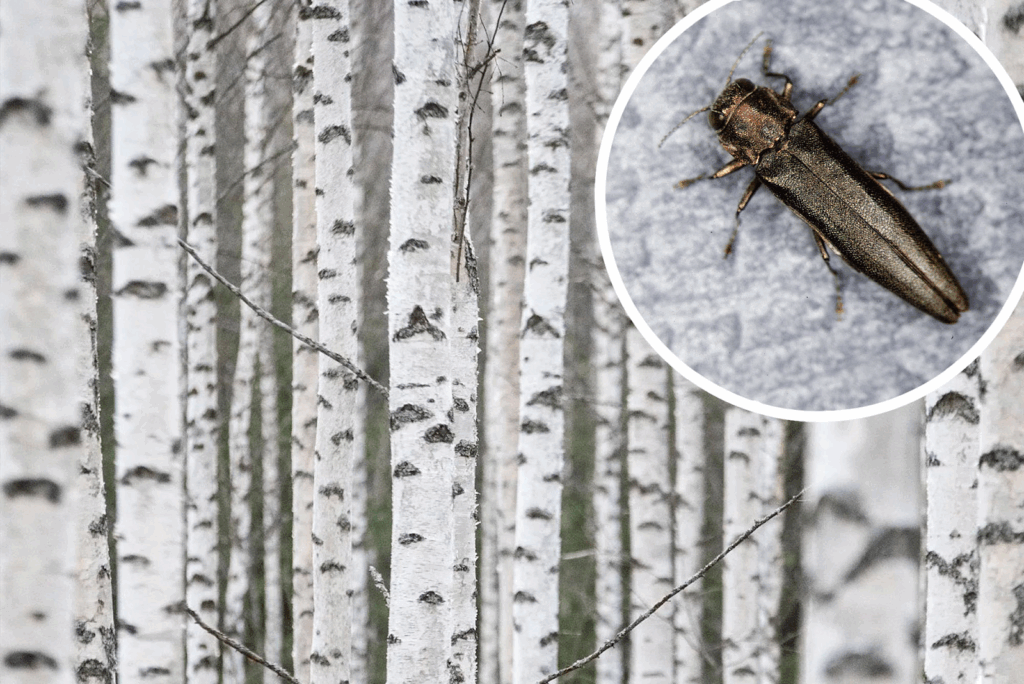
Figure 3: Bronze birch borer (inset) shown against a stand of susceptible birch trees, highlighting the close link between host species and pest infestation.
Landscaping strategies should priorities resistant species in vulnerable zones. Replacement planning must balance ecological and climatic compatibility, especially where droughts and urban heat islands intensify stress.
Treatment Options – Chemical Controls That Work

Figure 4: Example of professional trunk injection treatment with emamectin benzoate (Mectinite®), shown to provide two years of protection against bronze birch borer.
1) Systemic Insecticide Applications
Systemic treatments provide the most dependable control when applied at the cellulose uptake window. Imidacloprid soil drenches delivered between 1 April and 15 May penetrate roots during peak transport activity, providing high efficacy for trees with less than 40 percent canopy loss.
Professional trunk injections of emamectin benzoate offer deeper penetration and sustained effect, with repeat treatments every two to three years. Success rates correlate with damage level: achievements reach 70–85 percent under 30 percent canopy damage, but fall to 30–50 percent as dieback approaches the 40 percent threshold.
Though much research centers on the emerald ash borer, studies confirm the power of emamectin benzoate trunk injections to deliver near-complete control for up to three years, as seen in street tree applications. While these findings derive from related buprestid systems, they imply similar potency against the BBB under controlled application.
2) Contact Insecticides and Timing
Contact insecticides such as carbaryl or pyrethroids target adult beetles during emergence, still a narrow two- to three-week opportunity best predicted using degree-day models.
These treatments offer no protection against larvae that have already entered the cambium. While useful in limited scenarios for adult suppression, their utility remains marginal compared to systemic approaches.
Cultural Management – The Water Factor
Maintaining tree vigor is a cornerstone of BBB defence. It has been demonstrated that even very susceptible species can be infested by only applying 1-1.5 inches of water per week throughout the growing period.
Planting in places with cool and moist, somewhat shaded environments is another contribution to resilience. Covering the ground with 2-4 inch of mulch maintains moisture in the soil and maintains temperature, and fall-through-spring pruning will deter adult beetles to new cuts.
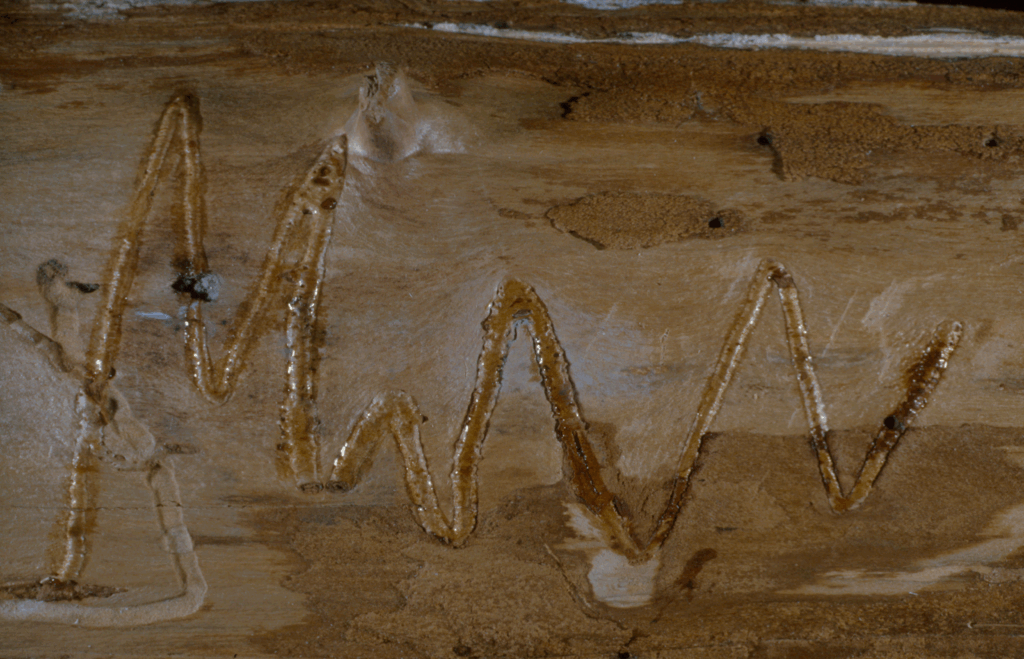
Figure 5: Distinctive serpentine larval galleries carved beneath birch bark by bronze birch borer, illustrating the internal damage that disrupts water and nutrient flow.
In combination, these cultural practices reduce reliance on chemical treatments and sustain healthy stress-resistant trees. For more in-depth watering methods, consult the birch tree care and watering guide.
Professional vs DIY Treatment – Making the Right Choice
Homeowners face critical decisions between DIY treatments and professional help. Licensed arborists, particularly ISA-certified with TRAQ specialization, have access to higher-concentration systemic treatments, including restricted-use pesticides, which are not available to the public. They also wield equipment designed to reach tall tree canopies safely.
- DIY projects cost typically between $50-120/year, compared to professional services which cost between $100-300/year to consult, and $150-250/year to treat after every two to three years. Although more expensive, professionals will always get better results and offer liability cover and written treatment plans.
- For comprehensive birch tree treatments, certified arborists provide the most effective long-term solutions.

Figure 6: Blooma Tree professional Randy safely removing a birch tree severely damaged by Bronze Birch Borer infestation in Seattle. The tree required complete removal due to extensive borer damage that compromised its structural integrity, demonstrating the devastating impact of this invasive pest on urban birch populations.
When exit holes persist or dieback continues despite DIY intervention, it often signals misapplication or wrong dosage, clear indicators that professional reevaluation is needed. If you’d like, I can link you to a certified arborist directory for trusted providers.
Economic Analysis – Treatment vs Replacement Decisions
Selecting between treatment and removal hinges on tree condition and projected outcomes. Average DIY treatment costs fall within $50–80 annually, while professional injections run $150–250 every few years. By contrast, full removal and replacement of mature trees typically costs $1,500–2,500 or more. Carefully assessing canopy decline using a five-level damage scale shows that treatments remain financially viable when decline is below Level 4 thresholds. Mature birches can add 10–25 percent to property value, reinforcing the economic incentive to treat early.
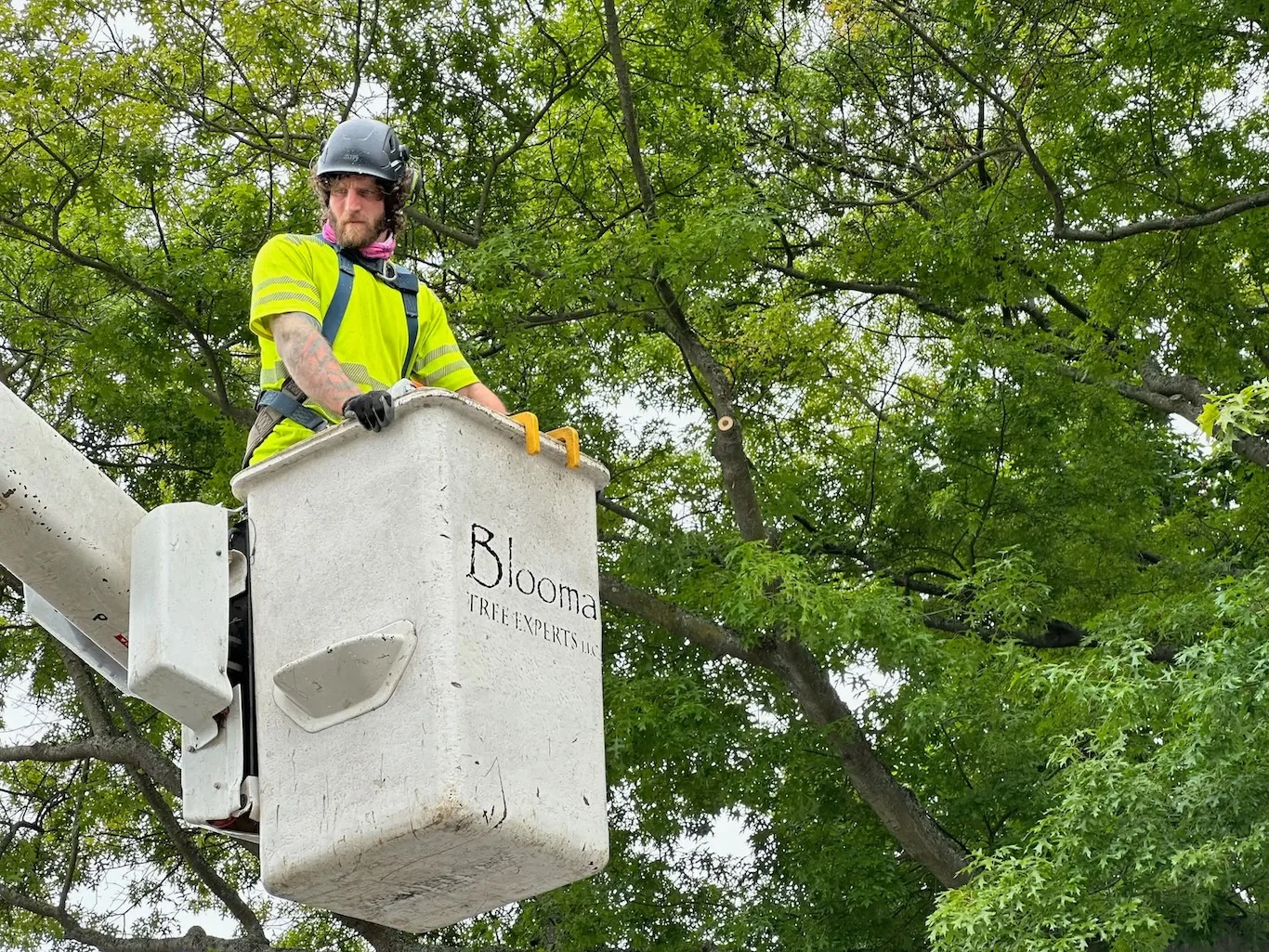
Figure 7: Certified Blooma Climbing ISA-Certified Arborist: (Steven Zipfel) using specialized lift equipment to treat a mature birch tree for bronze birch borer damage in Seattle.
Municipal analyses, such as Thunder Bay’s forestry model, have found that once damage exceeds the treatment threshold, replacement may make more economic sense. A strategic shift toward resistant species can optimize urban forest health and budget planning.
Regional Considerations and Climate Impact

Figure 8: Visual progression of bronze birch borer damage from a healthy tree to early infestation stages and finally advanced decline where recovery is no longer possible.
Climate plays a pivotal role in BBB dynamics. Drought periods consistently precede major outbreaks, while urban heat islands elevate stress levels among planted birches.
- In the Klamath Basin of Oregon, nearby infestations have caused over 91 percent damage rates by 2022. As more drastic and more common droughts are predicted, traditional birch species might be untenable in a large portion of their historic range.
Climate-adapted selection of trees and cultural practices that conserve water are increasingly becoming part of sustainability. Insights tailored for dry or urban zones can often be found in climate-adapted tree selection resources.
Biological Control and Natural Enemies
Natural biocontrol offers complementary potential. Parasitoid wasps in forested environments have been documented to attack up to 50 percent of BBB eggs, while woodpecker predation accounts for 51–60 percent larval mortality.
- Emerging research suggests that biological agents used against Emerald Ash Borer may cross-protect against BBB. However, natural enemies alone seldom suffice for control. Integrating them into a broader IPM framework magnifies effectiveness, particularly as chemical and cultural tactics suppress larger pest populations.
Prevention Strategies – Building Resistant Landscapes
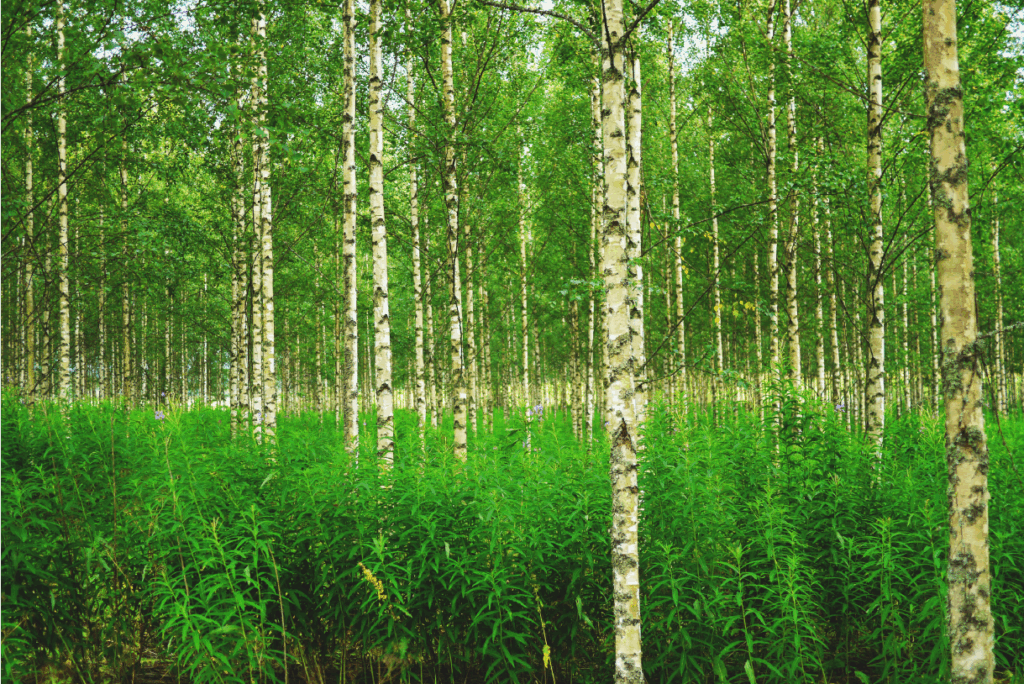
Figure 9: Healthy birch stand maintained through preventive strategies species selection, proper care, and proactive monitoring to build long-term resistance against bronze birch borer.
Long-term success depends on integrated, multi-tactic prevention. Programs combining species selection, cultural care, and timed treatments sustain tree health more effectively than single methods.
- Coordinated area-wide management yields 25–35 percent better outcomes than isolated individual treatments. Spring systemic applications, paired with contact sprays during emergence and winter sanitation pruning, overlay to create lasting protection.
A mindset extending across five or more years amplifies canopy health and reduces local breeding success. For strategic planning support, the integrated pest management strategies guide provides a good framework.
Future Outlook and Emerging Technologies
The future of BBB defence lies in innovation. Current research priorities include enhancing biocontrol, understanding climate vulnerability thresholds, and breeding birch genotypes with intrinsic resistance.
Innovations in heat treatment such as placing infested wood in 52 °C heat for 30 minutes can kill BBB prepupal stages and facilitate safer global wood trade in birch materials.
Technology such as precision dosing, extended release insecticides and remote sensing to detect early stresses is changing the way trees are protected. Arboricultural certification standards are evolving to include these innovations.
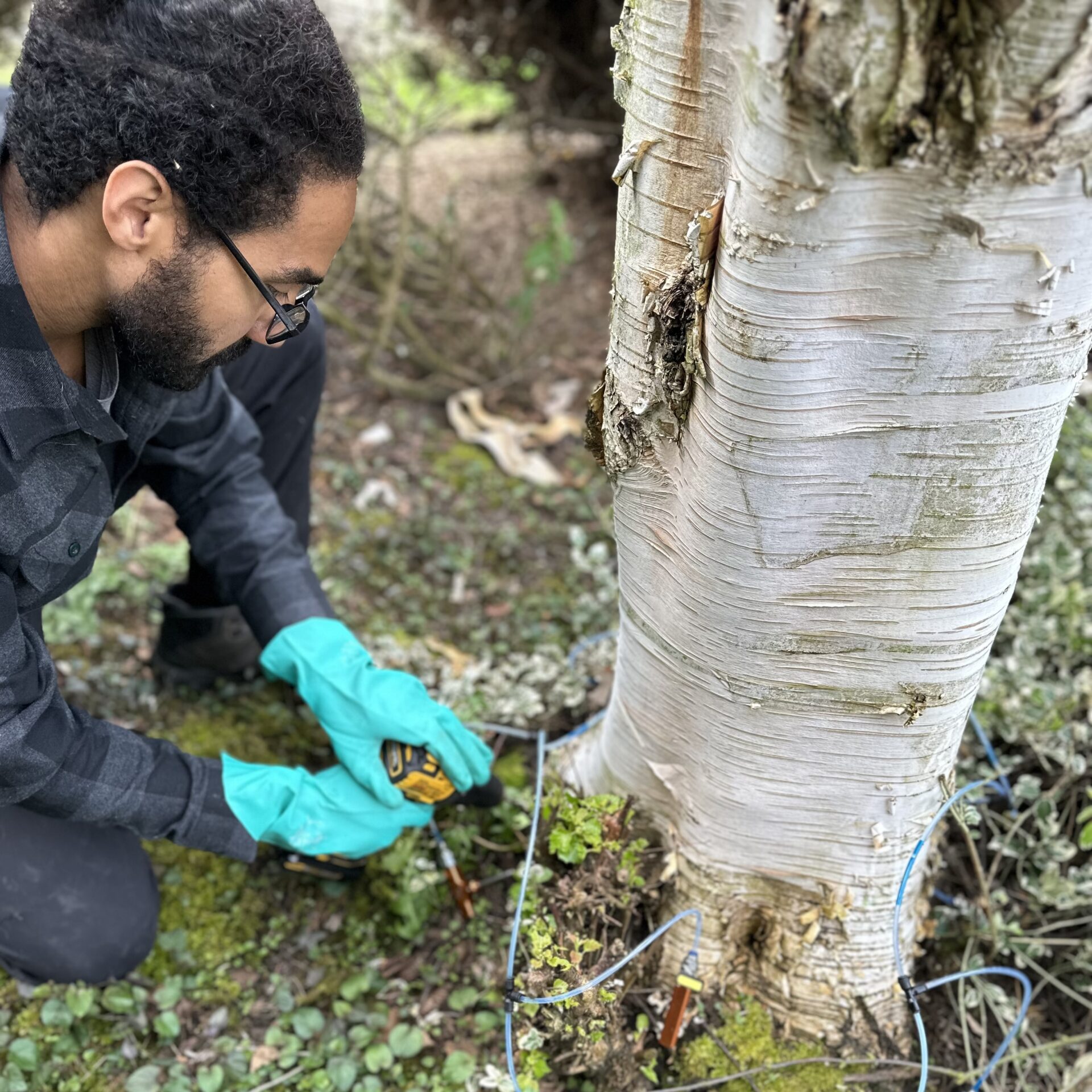
Figure 10: Blooma tree Ground Crew, Plant Healthcare Tech, (Ricky Santana-Silverio) examining birch bark for early signs of bronze birch borer infestation, part of ongoing efforts to develop detection tools and strengthen preparedness against potential spread.
When to Call a Professional – Critical Decision Points
Professional consultation becomes urgent when canopy decline exceeds 40 percent, when high-value trees near structures require trunk injections, or when removal is structurally complex.
Recurring exit holes or progressive dieback despite DIY efforts often indicate misapplications. Trunk injection treatments, especially those requiring restricted-use insecticides, demand professional handling.
Complex removal or hazardous situations call for specialized equipment and insurance-backed services. When these thresholds are reached, referring to emergency tree services is wise to protect trees, property, and safety.

